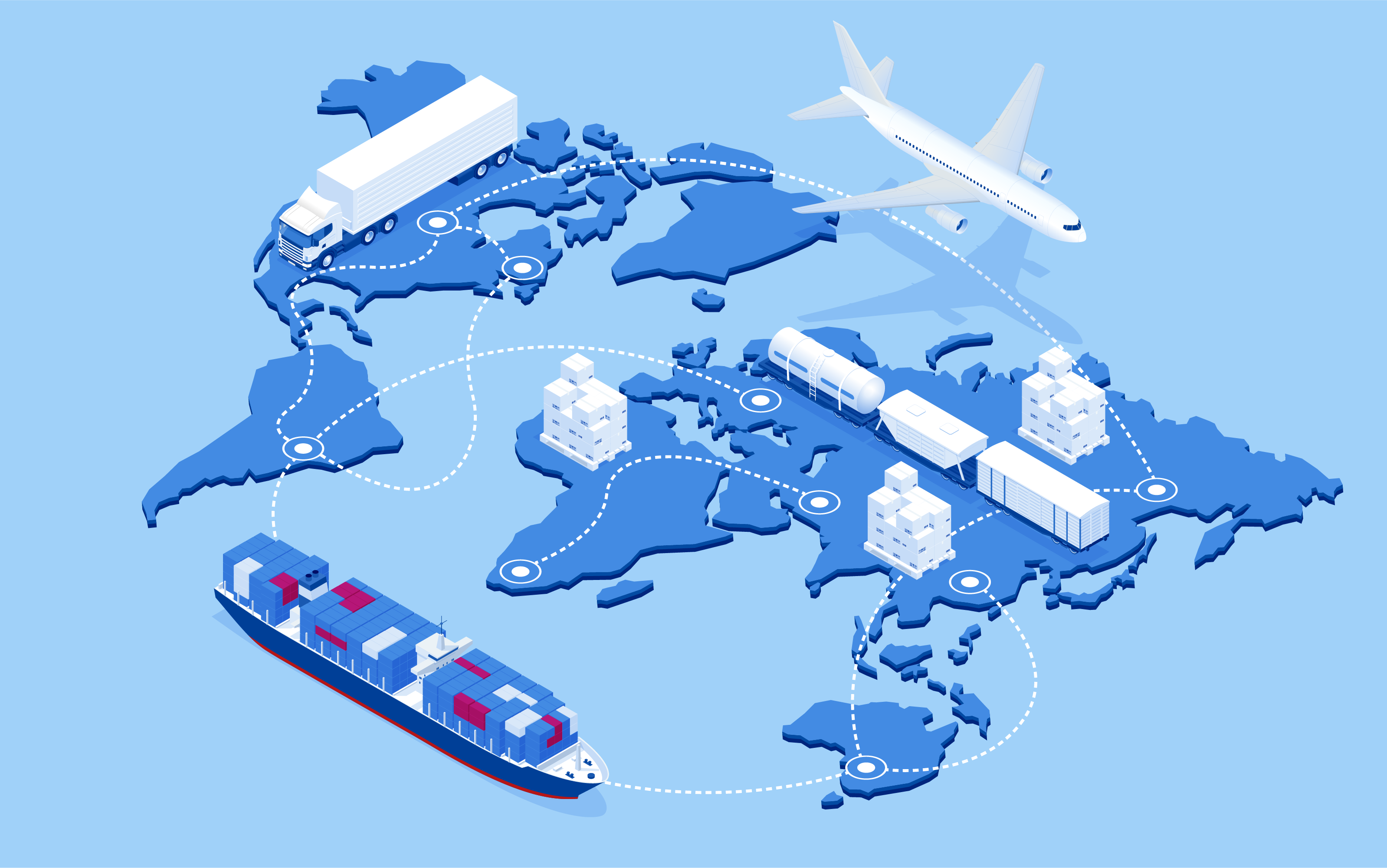Supply chain troubles have been startlingly obvious in recent times as many manufacturing (and other) companies have experienced huge supply issues with goods and materials. Everyone, even those who don’t work in supply chain management, will have felt the impact: missing items from shelves, delays on goods, higher prices…
In this article, we explore the recent disruption, the unhappy cluster of events that made matters worse, and what to expect in the year ahead.
So what’s been going on?
Coming off the back of a challenging 2020, worldwide supply chains could have done with a calmer year in 2021. But 2021 had other ideas!
In March, Suez Canal traffic was blocked for six days after the giant Ever Given container ship ended up unceremoniously wedged across it, causing chaos in trade flows between Asia and Europe. Elsewhere, ports in Shanghai and Ningbo endured closures and disruptions due to a combination of COVID-19 measures, congestions and Typhoon Chantu. As two of the largest container ports in the world, even brief closures or delays in handling containers have a knock-on effect on global supply chains, as containers pile up at ports and ships wait sometimes weeks to dock.
Amidst these challenging factors, there’s been rising demand for consumer goods, both during the various lockdowns, as consumers adjusted to life indoors, and afterwards, as economies around the world reopened for business. Alongside consumer goods, industries like food and pharma have also had a strong couple of years. All of which means more and more demand for the movement of goods – demand that our already strained global supply chains were unable to deal with.
Put it all together and what have you got? Congestion at ports, slower movement of vessels, huge demand for the movement of goods, limited container capacity, skyrocketing freight rates, and increased cost of goods and materials. It’s no wonder so many industries (especially manufacturing) are struggling with their supply chains.
We’ve seen a prime example of this in semiconductor chip manufacturing – chips that are critical components in everything from computers and smartphones to medical devices and cars. When the pandemic kicked off, demand for electronics rose, creating a backlog of orders for these vital chips. Many companies started to stockpile chips in response, creating even more of a shortfall. This, along with disruption in trade flows, meant serious delays for many manufacturers. Apple says it lost $6 billion in potential sales due to these chip shortages and the resulting manufacturing delays.
A quick look at big-picture issues
Clearly COVID-19, with its associated lockdowns, restrictions and drastic influence on supply and demand, is a major cause of the disruption. But there are other issues at play here. One is Brexit. As well as increasing red tape around the movement of goods (for example, cross-border checks), Brexit has also had an impact on supply chain recruitment, particularly when it comes to lorry drivers and warehouse workers.
There’s also the heavy reliance on just-in-time models, which has worked well in ‘normal’ times but just doesn’t work for uncertain times like these. Companies that were used to holding minimal inventory have been among the worst hit by supply chain disruption.
What’s the outlook for 2022?
No beating about the bush: freight costs are likely to remain high this year – and we’ll probably see higher costs for goods and materials. If the last couple of years are anything to go by, businesses should prepare for uncertainty and disruption to continue, albeit hopefully not to the same levels as we’ve seen recently.
On top of this era of persistent uncertainty, supply chains will have to grapple with sustainability issues, which may impact things like the types of vehicles and vessels used, and the location of distribution centres. We expect increasing pressure for more sustainable supply chain practices in 2022, and smart businesses will already be planning to ‘green up’ their supply chains.
Overcoming the obstacles
It’s clear that uncertainty is an unavoidable factor in today’s international supply chains, which makes supply chain risk management more important than ever. Organisations must identify the potential risks in their supply chain, assess the likely impact of those risks, and build robust strategies to weather disruption, should it occur. One such strategy might be to pivot away from a just-in-time model and increase inventories.
Another proactive way to address the uncertainty is to invest in supply chain talent. In the current candidate shortage, that may not seem like an easy fix, but there are ways around the talent squeeze. Working with a company that specialises in supply chain recruitment is a sensible start.
Here at Roc Search, for example, we have a pool of readily available supply chain professionals, across a variety of roles, who can help you prevent or overcome your biggest supply chain challenges. Work with us to strengthen your supply chain in 2022.






